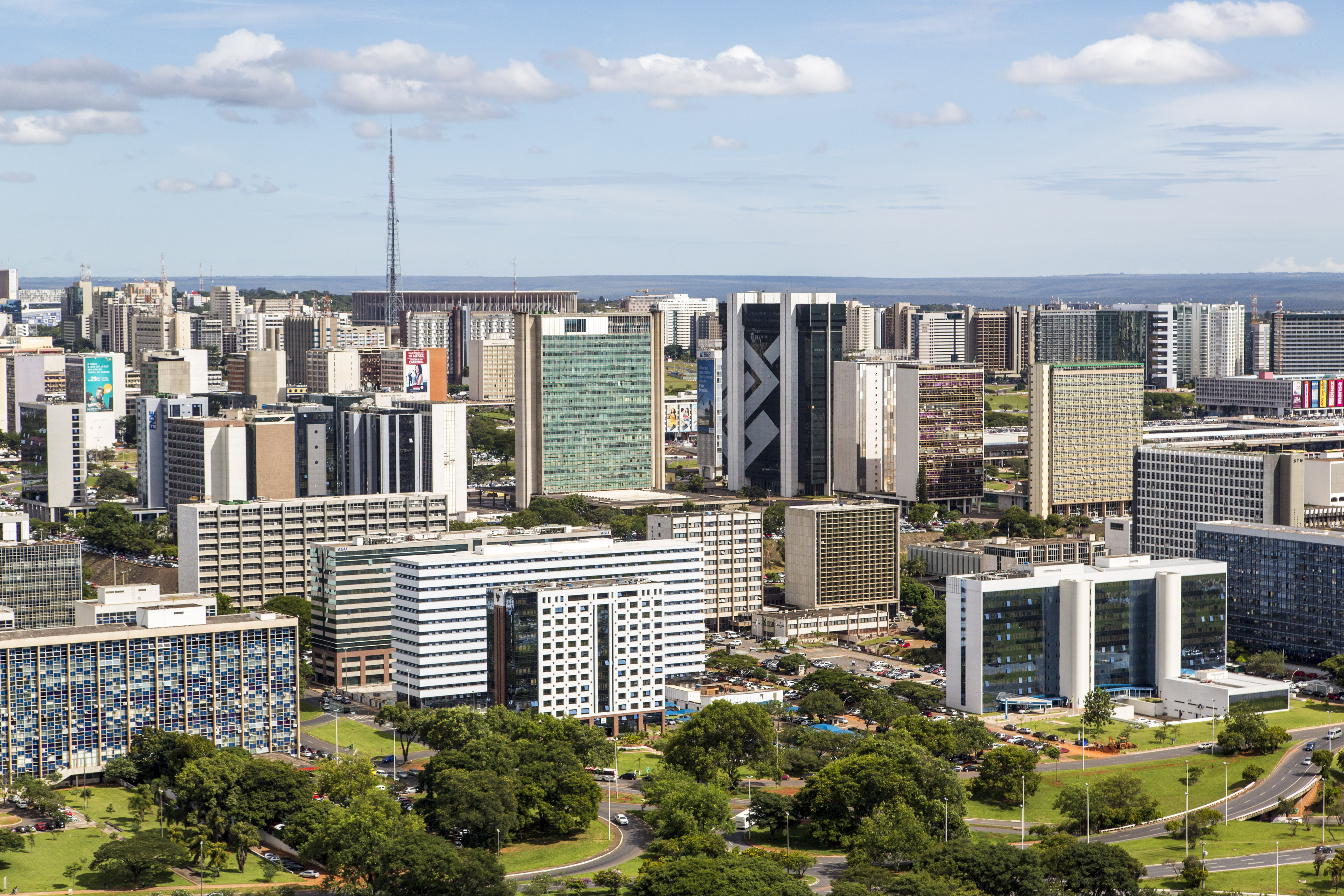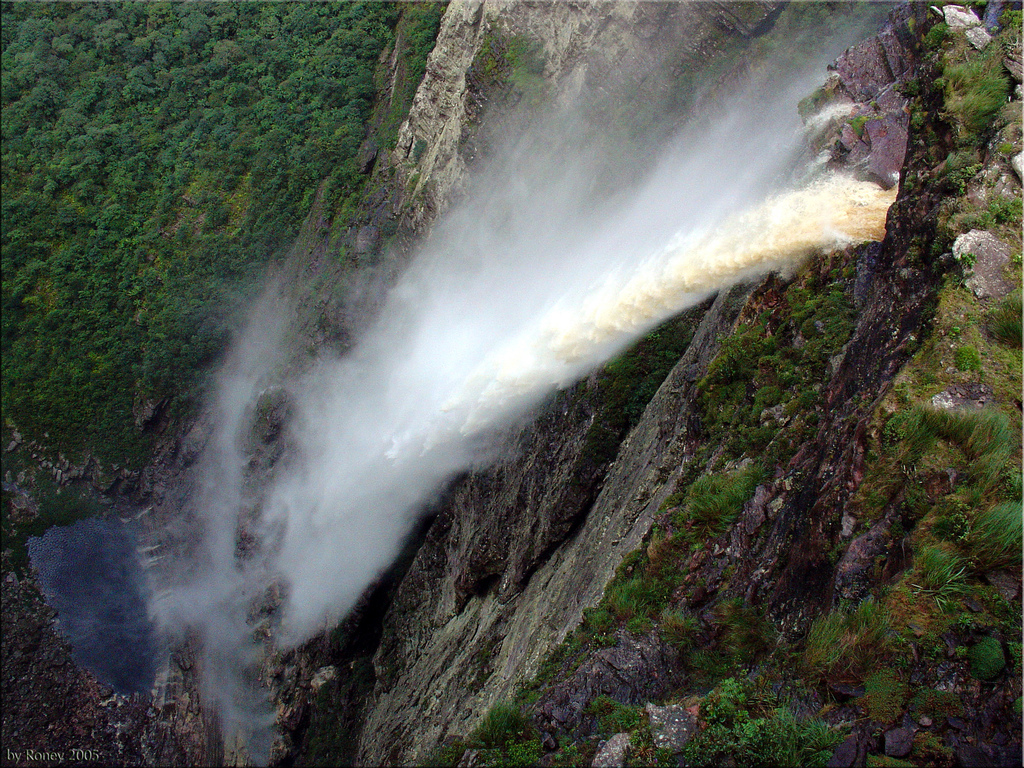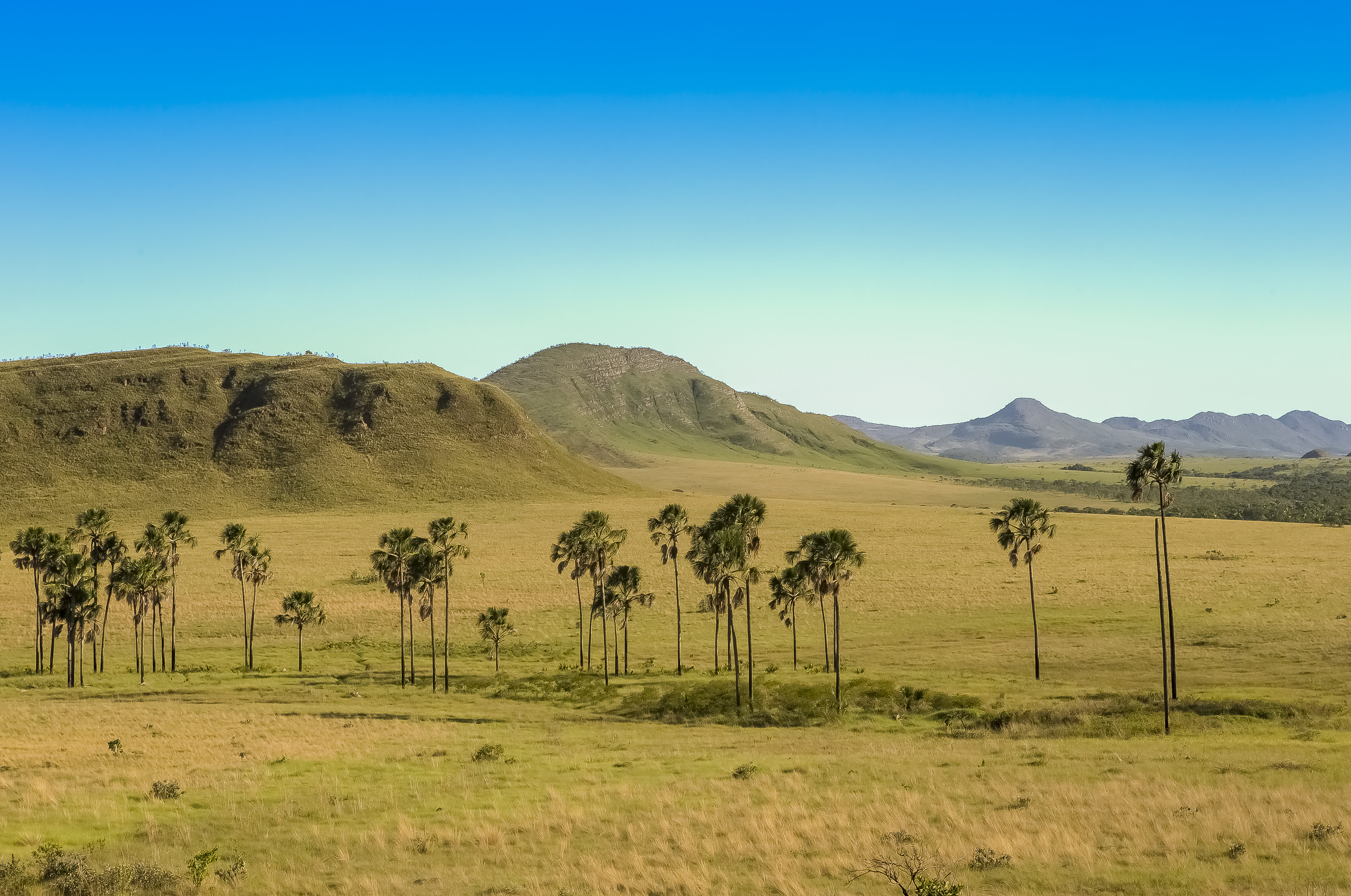|
Sobradinho, Federal District
Sobradinho is an administrative region in the Federal District in Brazil. It is bordered by Fercal to the north, Planaltina to the east, Itapoã to the south, and Lago Norte and Sobradinho II to the west. It was founded in 1960 and has a population of 85,491 as of 2010. Etymology The name comes from a style of building called Sobrado, according to the oldest residents, on the farm that originated the region there was a house of joão-de-barro, a bird known for making its nest out of clay. But this one was built as if it were a townhouse (in Portuguese: Sobrado), with two floors, hence the name. History Sobradinho began with a ranch of that name belonging to the municipality of Formosa, Goiás. According to popular history the name came from the existence of an old cross built long before 1850 along the banks of a stream near the ranch. On one of the arms of the cross were two little nests of a bird called joão de barro (Rufous hornero - Furnarius rufus), one on top of the o ... [...More Info...] [...Related Items...] OR: [Wikipedia] [Google] [Baidu] |
Administrative Region (Brazil)
The Brazilian administrative region ( pt, região administrativa) are an administrative division of the Federal District, or of the municipality of Rio de Janeiro. Federal District The Federal District is divided into 31 administrative regions. Rio de Janeiro The municipality of Rio de Janeiro is divided into 33 administrative regions. See also * Administrative regions of the Federal District (Brazil) * List of Administrative Regions in Rio de Janeiro * Region (administrative) In geography, regions, otherwise referred to as zones, lands or territories, are areas that are broadly divided by physical characteristics (physical geography), human impact characteristics (human geography), and the interaction of humanity and t ... References . Subdivisions of Brazil {{Brazil-geo-stub ... [...More Info...] [...Related Items...] OR: [Wikipedia] [Google] [Baidu] |
Itapoã, Federal District
Itapoã is an administrative region in the Federal District in Brazil Brazil ( pt, Brasil; ), officially the Federative Republic of Brazil (Portuguese: ), is the largest country in both South America and Latin America. At and with over 217 million people, Brazil is the world's fifth-largest country by area .... See also * List of administrative regions of the Federal District References External links Regional Administration of Itapoã websiteGovernment of the Federal District website Administrative regions in the Federal District (Brazil) {{DFBR-geo-stub ... [...More Info...] [...Related Items...] OR: [Wikipedia] [Google] [Baidu] |
1960 Establishments In Brazil
Year 196 ( CXCVI) was a leap year starting on Thursday (link will display the full calendar) of the Julian calendar. At the time, it was known as the Year of the Consulship of Dexter and Messalla (or, less frequently, year 949 ''Ab urbe condita''). The denomination 196 for this year has been used since the early medieval period, when the Anno Domini calendar era became the prevalent method in Europe for naming years. Events By place Roman Empire * Emperor Septimius Severus attempts to assassinate Clodius Albinus but fails, causing Albinus to retaliate militarily. * Emperor Septimius Severus captures and sacks Byzantium; the city is rebuilt and regains its previous prosperity. * In order to assure the support of the Roman legion in Germany on his march to Rome, Clodius Albinus is declared Augustus by his army while crossing Gaul. * Hadrian's wall in Britain is partially destroyed. China * First year of the '' Jian'an era of the Chinese Han Dynasty. * Emperor Xian ... [...More Info...] [...Related Items...] OR: [Wikipedia] [Google] [Baidu] |
List Of Administrative Regions Of The Federal District (Brazil)
The administrative regions of the Federal District ( pt, regiões administrativas do Distrito Federal) are administrative divisions of the Federal District, Brazil. History The division of the Federal District into administrative regions was made official through the 1964 federal law no. 4.545. Prior to this law, the regions were not officially defined, but their seats already existed and were often called satellite cities, with the exception of Brasília. The administrative regions are territorial subdivisions of the Federal District, for which physical limits, established by public power, define the jurisdiction of government action for purposes of administrative decentralization and coordination of public services of a local nature. This action is exerted through the intermediary of each regional administration. Broadly speaking, the administrative region would be the set of urban, suburban and rural areas belonging to the control of an urban center (seat of the administrativ ... [...More Info...] [...Related Items...] OR: [Wikipedia] [Google] [Baidu] |
Planaltina, Goiás
Planaltina is a city located in the Metropolitan Region of Brasilia, center of the state of Goiás, Brazil. Planaltina is often referred to as Planaltina de Goiás, but in official documents it is called Planaltina. Location and Geography Planaltina is part of micro-region 12 of the state, the so-called Entorno do Distrito Federal. It borders Água Fria de Goiás, Formosa, Mimoso de Goiás, Padre Bernardo and, the Distrito Federal. It is located on the northeastern boundary of the Federal District north of the satellite city of Planaltina, DF. It is 273 kilometers from the state capital Goiânia and . from Central Zone (Plano Piloto). Planaltina is the gateway to an enormous area of ecological preservation, in which can be found the important Chapada dos Veadeiros national park. Nearby is Lagoa Formosa, which, with its 17 square kilometers of surface area, is the largest natural lake in the state of Goiás. Also nearby is the source of the Maranhão River, which flows north ... [...More Info...] [...Related Items...] OR: [Wikipedia] [Google] [Baidu] |
Bahia
Bahia ( , , ; meaning "bay") is one of the 26 states of Brazil, located in the Northeast Region of the country. It is the fourth-largest Brazilian state by population (after São Paulo, Minas Gerais, and Rio de Janeiro) and the 5th-largest by area. Bahia's capital is the city of Salvador (formerly known as "Cidade do São Salvador da Bahia de Todos os Santos", literally "City of the Saint Savior of the Bay of All the Saints"), on a spit of land separating the Bay of All Saints from the Atlantic. Once a monarchial stronghold dominated by agricultural, slaving, and ranching interests, Bahia is now a predominantly working-class industrial and agricultural state. The state is home to 7% of the Brazilian population and produces 4.2% of the country's GDP. Name The name of the state derives from the earlier captaincy of Bahia de Todos os Santos, named for Bay of All Saints (' in modern Portuguese), a major feature of its coastline. The bay itself was named by the explorer ... [...More Info...] [...Related Items...] OR: [Wikipedia] [Google] [Baidu] |
Goiás
Goiás () is a Brazilian state located in the Center-West region. Goiás borders the Federal District and the states of (from north clockwise) Tocantins, Bahia, Minas Gerais, Mato Grosso do Sul and Mato Grosso. The state capital is Goiânia. With 7.2 million inhabitants, Goiás is the most populous state in the Center-West and the 11th most populous in the country. It has the ninth largest economy among Brazilian federative units. In Brazil's geoeconomic division, Goiás belongs to the Centro-Sul (Center-South), being the northernmost state of the southern portion of Brazil. The state has 3.3% of the Brazilian population and is responsible for 2.7% of the Brazilian GDP. The history of Goiás dates back to the beginning of the 18th century, with the arrival of pioneers from São Paulo. The Rio Vermelho region was the first to be occupied, where Vila Boa (later renamed Goiás) was founded. The development and settlement of the state took place, in a more intensified way, st ... [...More Info...] [...Related Items...] OR: [Wikipedia] [Google] [Baidu] |
Northeast Region, Brazil
The Northeast Region of Brazil ( pt, Região Nordeste do Brasil; ) is one of the five official and political regions of the country according to the Brazilian Institute of Geography and Statistics. Of Brazil's twenty-six states, it comprises nine: Maranhão, Piauí, Ceará, Rio Grande do Norte, Paraíba, Pernambuco, Alagoas, Sergipe and Bahia, along with the Fernando de Noronha archipelago (formerly a separate territory, now part of Pernambuco). Chiefly known as ''Nordeste'' ("Northeast") in Brazil, this region was the first to be colonized by the Portuguese and other European peoples, playing a crucial role in the country's history. ''Nordestes dialects and rich culture, including its folklore, cuisines, music and literature, became the most easily distinguishable across the country. To this day, ''Nordeste'' is known for its history and culture, as well as for its natural environment and its hot weather. ''Nordeste'' stretches from the Atlantic seaboard in the nort ... [...More Info...] [...Related Items...] OR: [Wikipedia] [Google] [Baidu] |
Formosa, Goiás
Formosa is a municipality located in the state of Goiás, Brazil, approximately 80 kilometers northeast of Brasília. The population was 123,684 (estimation 2020) in a total area of 5,813.637 km2. Formosa is known for its waterfalls and natural environment. It is a large producer of cattle and grains and is one of the fastest-growing cities in the state. History Arraial dos Couros was the first name of Formosa, which was founded in the second half of the eighteenth century on an uncertain date. For lack of documentation the early history is fragmented and historians can only speculate about the real facts. What is known is that problems connected to the area of health were the motive for the transfer of the old settlement which was founded and built by black slaves, located on the banks of the Itiquira River and the Paranã in the tropical Paranã valley. At the time a devastating fever swept the place, probably caused by the unhealthy climate of the river location, ... [...More Info...] [...Related Items...] OR: [Wikipedia] [Google] [Baidu] |
Rufous Hornero
The rufous hornero (''Furnarius rufus'') is a medium-sized ovenbird in the family Furnariidae. It occurs in eastern South America, and is the national bird of Argentina. Also known as the red ovenbird, it is common in savannas, second-growth scrub, pastures and agricultural land and is synanthropic. Its range includes midwestern, southeastern and southern Brazil, Bolivia, Paraguay, Uruguay and northern and central Argentina, extending as far south as northern Patagonia. The species is most closely related to the crested hornero of Paraguay and Argentina. There are four accepted subspecies. The rufous hornero is medium-sized with a square tail and very slightly decurved bill. The plumage is overall reddish brown with a dull brown crown and a whitish throat. Sexes are alike and juvenile birds are slightly paler below (probably because they are cleaner). Rufous horneros feed on insects and other arthropods obtained by foraging on the ground while walking. They sometimes ... [...More Info...] [...Related Items...] OR: [Wikipedia] [Google] [Baidu] |
Sobradinho II
Sobradinho II is an administrative region in the Federal District in Brazil. It is located to the northeast of Brasília. Sobradinho II is bordered by Fercal Fercal is an administrative region in the Federal District in Brazil. Fercal was founded on September 11, 1956 Events January * January 1 – The Anglo-Egyptian Sudan, Anglo-Egyptian Condominium ends in Sudan. * January 8 – Opera ... to the north, Sobradinho to the east, and Brasília to the southwest. It was created on 27 January 2004 via law nº 3.314, making it the 26th administrative region. References External links Regional Administration of Sobradinho II websiteGovernment of the Federal District website Administrative regions in the Federal District (Brazil) Populated places established in 2003 {{DFBR-geo-stub ... [...More Info...] [...Related Items...] OR: [Wikipedia] [Google] [Baidu] |
Lago Norte
Lago Norte (; lit. North Lake) is an administrative region in the Federal District in Brazil. It is bordered by Brasília, Sobradinho II, and Sobradinho to the north, Itapoã and Paranoá to the east, and Lago Sul through the Paranoá Lake. It completely surrounds the administrative region of Varjão. Most of its inhabited area is located on a peninsula of Lake Paranoá A lake is an area filled with water, localized in a basin, surrounded by land, and distinct from any river or other outlet that serves to feed or drain the lake. Lakes lie on land and are not part of the ocean, although, like the much lar .... In a 2010 report, its population was 41,627. Lago Norte is home to the Brasilia Digital TV Tower. Its current administrator is Marcelo Ferreira da Silva. It was founded in 1994. Transport Lago Norte has the third largest network of bike lanes in the Federal District, having 35,1km of bike lanes. See also * List of administrative regions of the Federal Dis ... [...More Info...] [...Related Items...] OR: [Wikipedia] [Google] [Baidu] |




